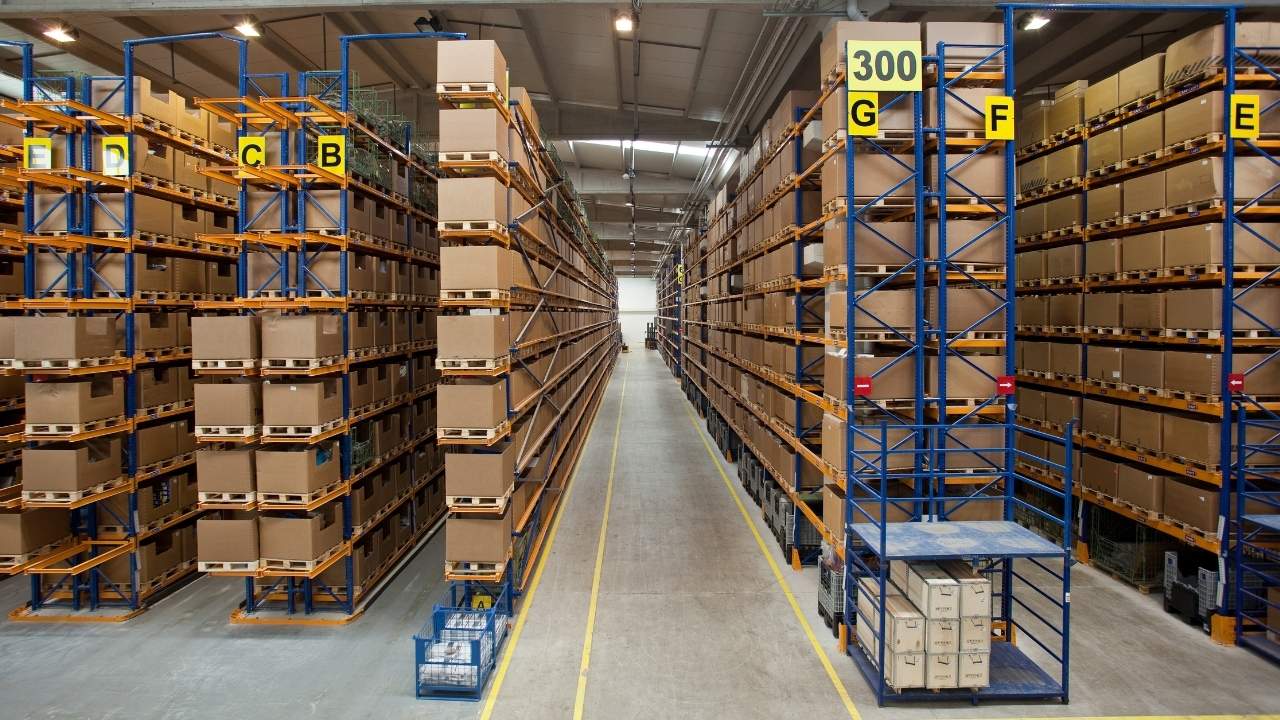Key Insights for Optimizing Your Supply Chain Through Landed Costs Management
Demystifying Landed Cost
For any business involved in international commerce, accurately calculating and analyzing landed cost is a pivotal yet often misunderstood discipline. This comprehensive guide aims to unpack the key intricacies of landed cost management and provide practical insights for supply chain leaders looking to optimize global operations.
Layers of Landed Cost
At its core, landed cost represents the comprehensive end-to-end costs associated with getting a product from its origin to its final destination. It encompasses the complete journey – from supplier overseas to customer doorstep.
But landed cost is far more complex than just the product invoice price. It includes numerous additional cost components accumulated throughout the import process. Let’s examine these key layers:
Overseas Sourcing Costs
- Raw material costs – The prices paid to sub-suppliers for components and inputs. Fluctuating commodity markets have a direct impact.
- Manufacturing labor – The wages paid to operate foreign production facilities. Currency rates and local labor laws are key variables.
- Supplier quality control – Expenses related to oversight of offshore facilities and product testing. Vital for compliance and risk reduction.
- Export packaging – Costs of preparing goods for international transport and providing protective packaging.
Global Logistics Costs
- Origin Freight – Fees paid to transport goods from supplier to port of export via truck or rail.
- Port handling – Terminal fees for unloading, loading, and document processing at both export and import ports.
- Ocean/air freight – International shipping rates that fluctuate with fuel prices, routes, and seasonal demand.
- Insurance – Premiums paid to cover goods in transit against loss or damage. Varies by product value and mode.
Import Clearance & Regulatory Costs
- Customs duties – Import taxes levied on shipments based on product classification and origin. A major cost factor.
- Customs processing – Documentation fees and brokerage services to coordinate customs clearance.
- FDA/CPSC testing – Mandatory product testing and certification costs to comply with safety regulations.
- Penalties & delays – Expenses incurred due to non-compliance with customs or other trade regulations.
Domestic Distribution Costs
- Domestic freight – Shipping costs from port to company distribution centers via ground, rail, or air.
- Warehousing – Storage, handling, and labor costs at distribution facilities. Inventory financing costs should also be considered.
- Local delivery – Final mile shipping expenses to deliver goods to retail locations or direct customers.
As we can see, landed cost encompasses much more than just the unit price on a PO. Astute managers consider the total picture.
Why Understanding Landed Cost is Crucial
Landed cost directly impacts nearly all aspects of an international business. Here’s why it matters:
- Profitability – Landed cost largely determines the profit margin for imported goods. Every landed cost reduction expands margins.
- Pricing – Companies must completely understand their landed costs to set optimal pricing. Otherwise, pricing will be set blindly.
- Sourcing – Comparing supplier landed costs is key for identifying the most cost-efficient source locations.
- Shipping – Analyzing route, carrier, and port landed costs helps minimize transport expenses.
- Inventory – Landed cost drives financing costs and determines ideal stock levels to maintain.
- Forecasting – Accurately projecting future landed costs provides visibility into cash flow requirements.
- Compliance – Understanding import costs helps ensure adequate liquidity to pay duties immediately upon customs clearance.
Without a firm grasp on landed costs, global sourcing, financial planning, and supply chain management will all suffer from suboptimal decision-making.
Avoiding Common Pitfalls in Landed Cost Management
While vital, landed cost analysis is complex and companies often make critical missteps:
- Hidden costs – Overlooking supplemental fees like terminal handling, quality inspection, or document fees. Small costs add up.
- Volatile factors – Failing to regularly update projections for exchange rates, freight surcharges, or tariff changes.
- Non-linear costs – Assuming costs will scale uniformly rather than accounting for discounts from higher volumes.
- Infrequent analysis – Neglecting to reassess carriers, routes, and product origins through regular RFPs.
- Limited view – Focusing solely on cost per unit rather than total landed cost impact across volumes.
Without diligence and a rigorous process, landed cost analysis will be flawed and lead to poor global supply chain decisions.
Best Practices for Managing Landed Costs
Mature global organizations implement several best practices to refine landed cost management:
- Map the end-to-end value chain – Account for every cost-incurring step from overseas origin to end customer.
- Employ advanced analytical models – Use predictive data modeling and simulations to forecast volatile cost variables.
- Automate data collection – Integrate ERP with IoT data streams to collect cost components in real time.
- Centralize globally – Consolidate landed cost analysis to ensure standardization across regions.
- Reassess frequently – Review landed costs quarterly or monthly, not annually. Global variables shift constantly.
- Leverage trade agreements – Pursue free trade or export processing zones to reduce duties.
- Collaborate with suppliers – Work with suppliers to optimize packaging, lead times, and route selection.
With continuous improvement, companies can institutionalize world-class landed cost management practices.
Making Informed Sourcing Decisions
Clear visibility into total landed costs empowers purchasing teams to make optimal supplier decisions:
- Compare supplier landed costs – Accurately identify the most cost-efficient country and supplier locations.
- Negotiate contracts – Use landed cost data to back negotiations around price, minimum order quantities, and lead times.
- Balance costs – Weigh landed cost savings against other supplier selection criteria like quality, reliability, and capabilities.
- Pursue joint cost reduction – Work with suppliers to reduce duties through trade preferences and optimized transport routes and packaging.
- Develop alternative sources – Maintain a diversified supplier portfolio across regions to mitigate the risk of supply disruption in a single country.
With reliable landed cost calculations, buyers can optimize supplier selection and contracting while mitigating global supply risk.
Informing Global Supply Chain Strategy
Mature landed cost management has broad implications for global supply chain strategy:
- Production footprint – Landed costs reveal the most cost-optimal countries for manufacturing and distribution.
- Source diversification – Landing cost data balances cost prioritization with supply resilience.
- Inventory positioning – Optimal inventory staging locations are identified to avoid unnecessary duty exposure.
- Trade-off analysis – The true total cost difference between nearshoring, offshoring, and reshoring is clarified.
- Market entry – Landed costs inform new market entry strategies and localization requirements.
Armed with accurate cost models, executives can design a global supply chain that achieves both cost competitiveness and strategic flexibility.
Implementing a Landed Cost Management System
Given the complexity, specialized software is recommended for superior landed cost management:
- ERP integration – Connect seamlessly with financial data from the ERP system.
- Automation – Configure workflows for routine landed cost calculation and reporting.
- Analytics – Enable data modeling and scenario analysis to optimize cost and risk trade-offs.
- Global trade content – Continuously updated databases on duties, tariffs, taxes, and trade regulations.
- Visualization – Intuitive dashboards to track KPIs and gain visibility into cost drivers.
- Collaboration – Facilitate data sharing with suppliers and logistics partners.
By leveraging purpose-built software, the landed cost management process is streamlined and optimized.
For companies involved in global sourcing, manufacturing, and trade, understanding and strategically managing landed cost is mission critical. Mastering landed cost analysis provides a competitive edge through optimized efficiency, informed decision-making, and supply chain excellence.
Drilling Down on Customs Duties
Among the most significant elements of landed cost, customs duties warrant detailed examination. Duties are determined based on several factors:
- Harmonized Tariff Code – The HTS code classifies the product and determines the applicable duty rate. Choosing the optimal code requires research and customs expertise.
- Country of origin – Each nation has negotiated duty rates with trading partners. Production location impacts duties paid.
- Free trade agreements – Qualifying for zero or reduced duty under FTAs like NAFTA requires compliance with rules of origin requirements.
- Customs valuations – The assessed value of the imported goods determines the duty amount. Methods like transaction value impact this.
- Duty drawback – Rebates can be claimed on duties paid for imported components later exported as finished goods. This requires proper documentation.
Through careful customs planning, companies can legitimately minimize duties paid. But this requires an intimate understanding of customs regulations.
The Impact of Trade Compliance on Landed Cost
Beyond just financials, non-compliance with customs and trade regulations can have disastrous landed cost consequences:
- Fines & penalties – Failure to follow import/export laws can lead to severe fines from customs authorities.
- Shipment delays – Missing documentation or unmanifested goods can cause lengthy shipment delays during clearance.
- Increased inspections – Non-compliance flags importers for added inspections and examinations which slow the supply chain.
- Demurrage & detention – Storage and delay fees at ports quickly accumulate when shipments are held up.
- Lost sales – Late shipments due to compliance issues can result in missed sales and disappointed customers.
Maintaining rigorous trade compliance procedures is essential for avoiding these substantial extra costs.
Leveraging Free Trade Agreements
Free trade agreements (FTAs) offer a valuable mechanism for reducing landed costs:
- Duty elimination – FTAs like USMCA remove duties on goods originating from member countries.
- Accelerated clearance – Shipments receive expedited customs clearance and processing under FTAs.
- Lower local costs – Goods manufactured in FTA countries avoid import costs into that market.
However, capitalizing on FTAs requires strict adherence to rules of origin requirements. Companies must maintain close oversight of supply chain operations and documentation to qualify for preferential treatment. Compliance management is critical.
Evaluating Total Landed Cost Impact
Rather than analyzing landed cost per unit, companies should evaluate the total aggregate impact:
- Volume discounts – Higher shipment volumes can lower freight rates and unlock supplier quantity breaks.
- Minimum shipment requirements – Small, frequent orders incur higher total handling and clearance fees than bulk shipments.
- Duty reduction – Even minor duty rate reductions yield big savings when multiplied by high import volumes.
- Inventory savings – Lower landed costs allow reducing inventory buffers, freeing up working capital.
This holistic perspective reveals opportunities for significant landed cost savings through supply chain optimization and negotiation.
Holistic Supply Chain Management with Versa Cloud ERP
Having visibility into and control over total landed cost is imperative for businesses seeking a competitive edge.
Versa Cloud ERP provides integrated robust solutions purpose-built for global supply chain organizations that enable world-class landed cost management.
With Versa Cloud ERP, all elements of landed costs can be tracked and analyzed in a unified platform. Integrated global trade, transportation, accounting, warehouse, and inventory modules give end-to-end visibility into the complete costs of sourcing globally.
Powerful analytics empower informed decisions on optimum manufacturing locations, inventory positioning, and sourcing based on total cost. Automation streamlines duties and customs clearance while ensuring trade compliance.
By optimizing landed costs, Versa Cloud ERP helps supply chain organizations maximize profitability, cash flow, and competitive advantage.
To learn more about how Versa Cloud ERP can transform your global supply chain, schedule a free personalized demo today. See firsthand how our solutions can help you gain control over complexity and drive new levels of efficiency across your operations worldwide.
ERP systems are fundamental to efficiently managing a modern supply chain in the manufacturing sector. By integrating various business processes, ERP systems streamline operations, enhance visibility, and improve decision-making, making them indispensable tools for manufacturers aiming to stay competitive in today’s market.
Empower your business with the knowledge to navigate the realm of an Integrated ERP solution, specifically tailored to your business needs. Gain insights, streamline processes, and propel your financial management to new heights with this comprehensive guide
With Versa Cloud ERP’s Implementation guide learn how a business can ensure a successful ERP Solution Implementation. Navigate the complexities of implementation with confidence!
Effectively manage your financials, accounting, inventory, production, and warehouse management workflows with our award-winning ERP.
Let Versa Cloud Erp’s do the heavy lifting for you.
[widget id=”custom_html-40″]
[widget id=”custom_html-42″]
[widget id=”custom_html-30″]
Do Business on the Move!
Make your businesses hassle-free and cut the heavyweights sign up for the Versa Cloud ERP today!!
Join our Versa Community and be Future-ready with us.






